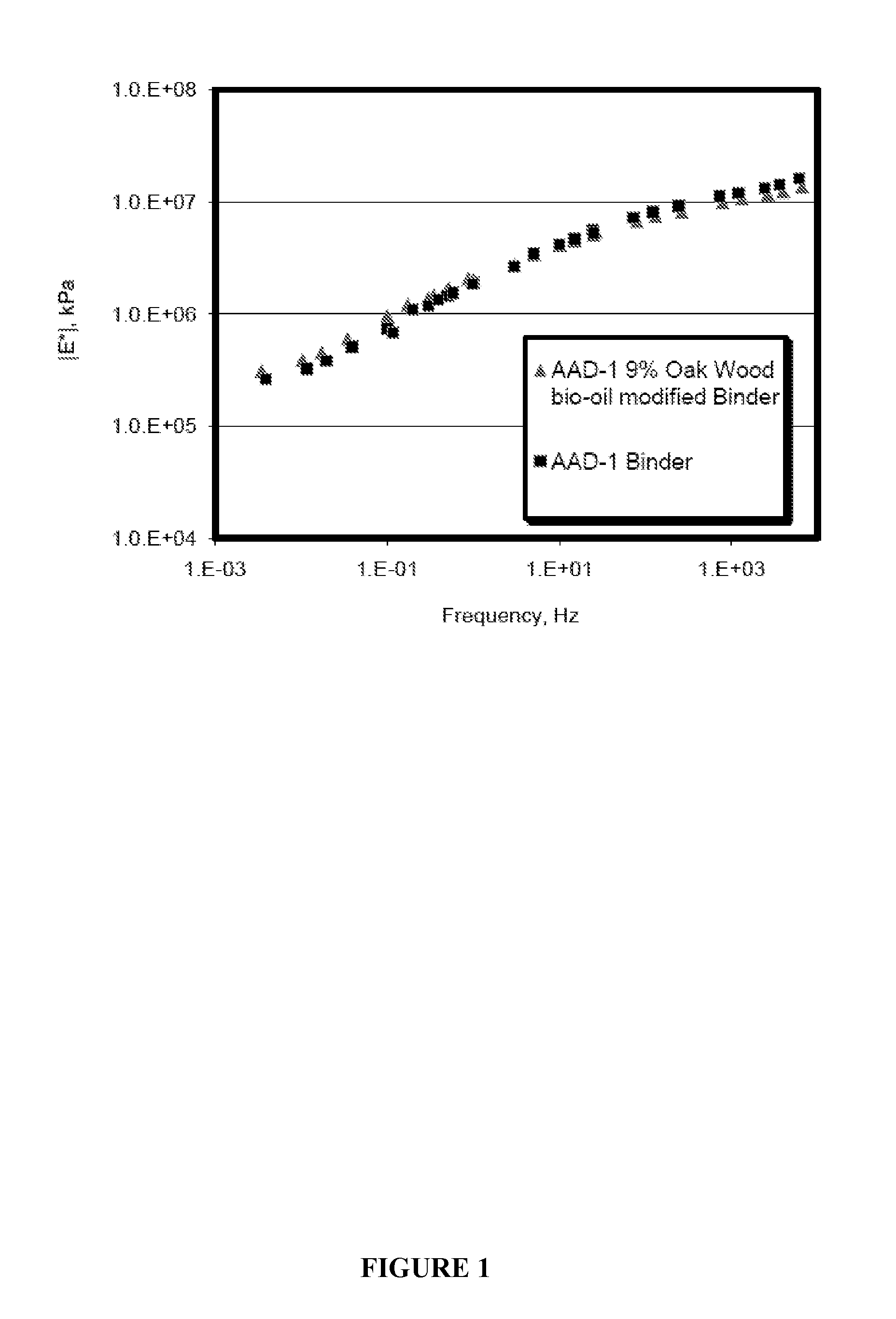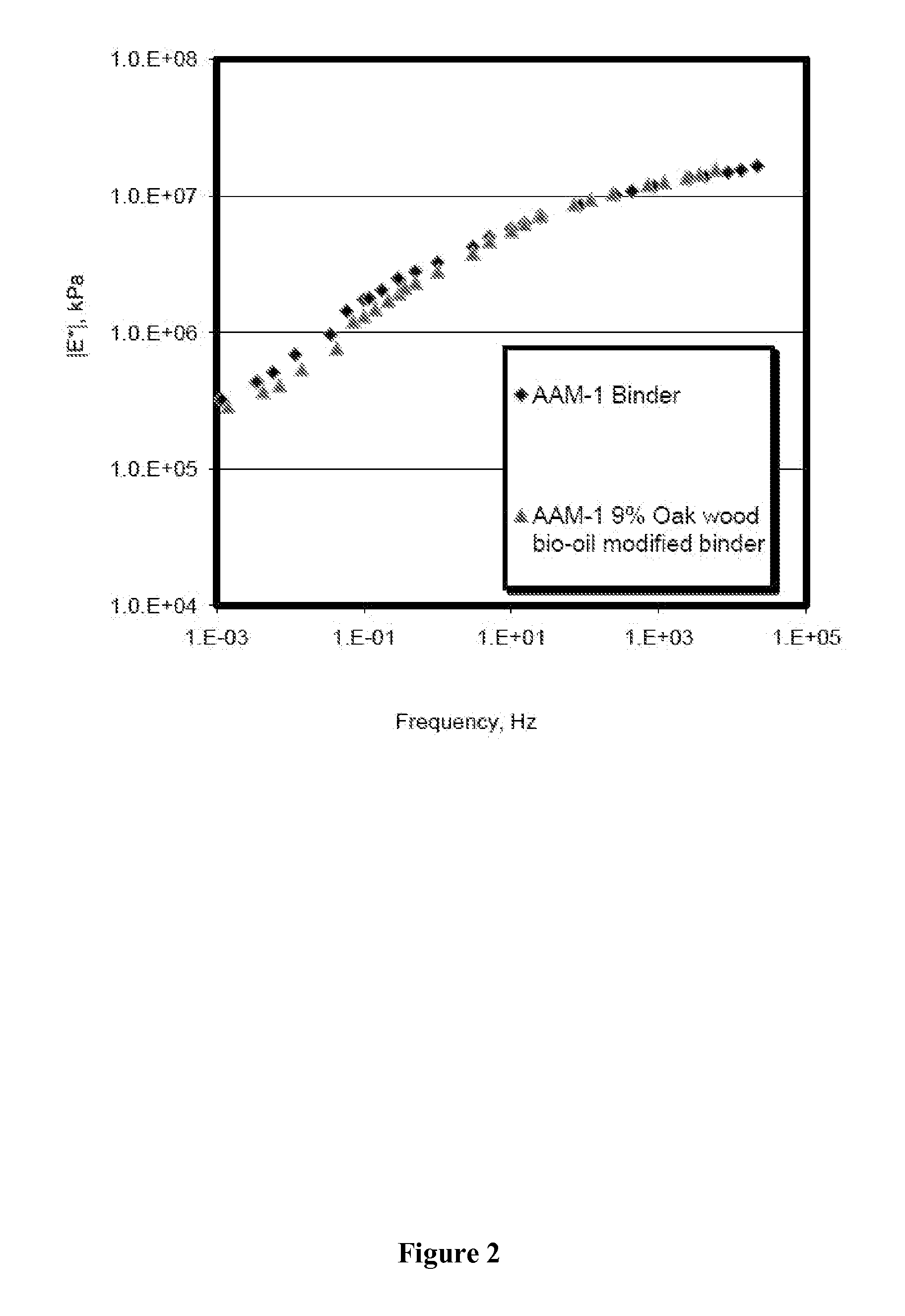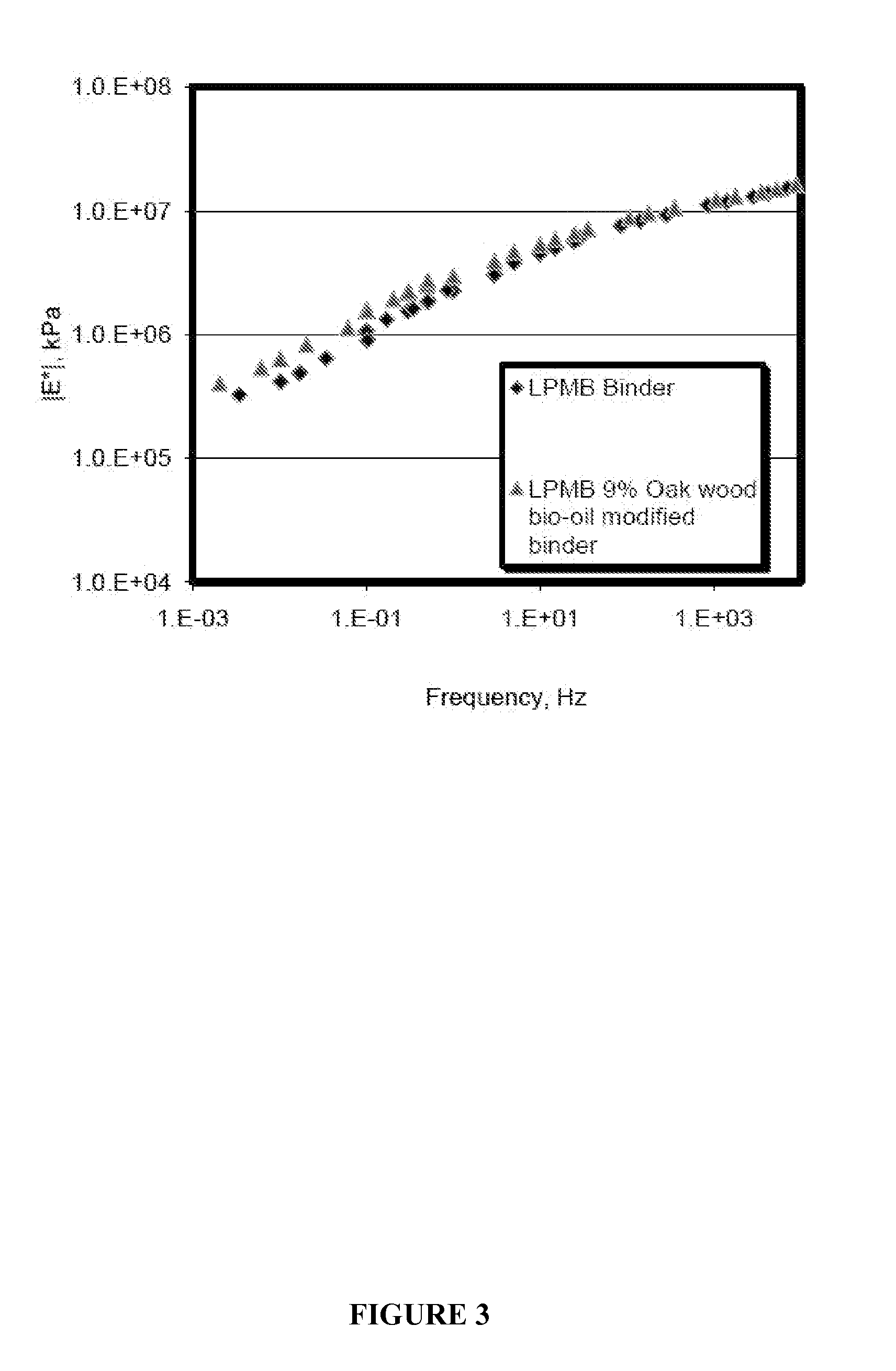Asphalt materials containing bio-oil and methods for production thereof
- Summary
- Abstract
- Description
- Claims
- Application Information
AI Technical Summary
Problems solved by technology
Method used
Image
Examples
example 1
Untreated Materials
[0039]Three asphalt binders were chosen for this study: two binders from the Federal Highway Administration's (FHWA) Materials Reference Library (MRL), AAM-1 and AAD-1 as well as a locally produced polymer modified asphalt binder (LPMB). AAM-1 is a performance grade (PG) 64-16 West Texas Asphalt, which is less susceptible to oxidative aging. AAD-1 is PG 58-22 California coastal asphalt, which is more susceptible to oxidative aging compared with AAM-1. The LPMB is a styrene-butadiene-styrene (SBS) polymer modified PG 58-22 binder. The chemical compositions (by %) of the two MRL binders are shown in Table 1.
TABLE 1Chemical contrast of AAD-1 and AAM-1ComponentElementalCompositionAAD-1AAM-1CompositionAAD-1AAM-1Asphaltenes23.99.4Carbon81.686.8Polar aromatics41.350.3Hydrogen10.811.2Napthene aromatics25.141.9Oxygen0.90.5Saturates8.61.9Sulfur6.91.2
[0040]Bio-oils tested were the ESP stage fraction derived from the pyrolysis of corn stover, oak wood, and switchgrass. The py...
example 2
Preparation of Bio-Oil or Tall-Oil Treatment Asphalt Binder
[0045]A high speed shear mixer was used to prepare the ESP bio-oil modified asphalt, tall oil modified asphalt and bio-oil modified asphalt with tall oil. The binder mixing was conducted at 155° C. with a shearing speed of 5000 revolutions per minute for one hour.
example 3
Superpave Binder Aging Procedure
[0046]The rolling thin film oven (RTFO) was used to simulate the asphalt short-term aging as described in ASTM D2872. The long-term binder aging was addressed by the pressurized aging vessel (PAV) test (ASTM D 6521) by using the residue from the RTFO tests. The short-term aging is described as the aging during the asphalt mixture production and construction. The long-term aging represents approximately 12 years of in-service field aging.
PUM
| Property | Measurement | Unit |
|---|---|---|
| Temperature | aaaaa | aaaaa |
| Temperature | aaaaa | aaaaa |
| Fraction | aaaaa | aaaaa |
Abstract
Description
Claims
Application Information
 Login to View More
Login to View More - R&D
- Intellectual Property
- Life Sciences
- Materials
- Tech Scout
- Unparalleled Data Quality
- Higher Quality Content
- 60% Fewer Hallucinations
Browse by: Latest US Patents, China's latest patents, Technical Efficacy Thesaurus, Application Domain, Technology Topic, Popular Technical Reports.
© 2025 PatSnap. All rights reserved.Legal|Privacy policy|Modern Slavery Act Transparency Statement|Sitemap|About US| Contact US: help@patsnap.com



